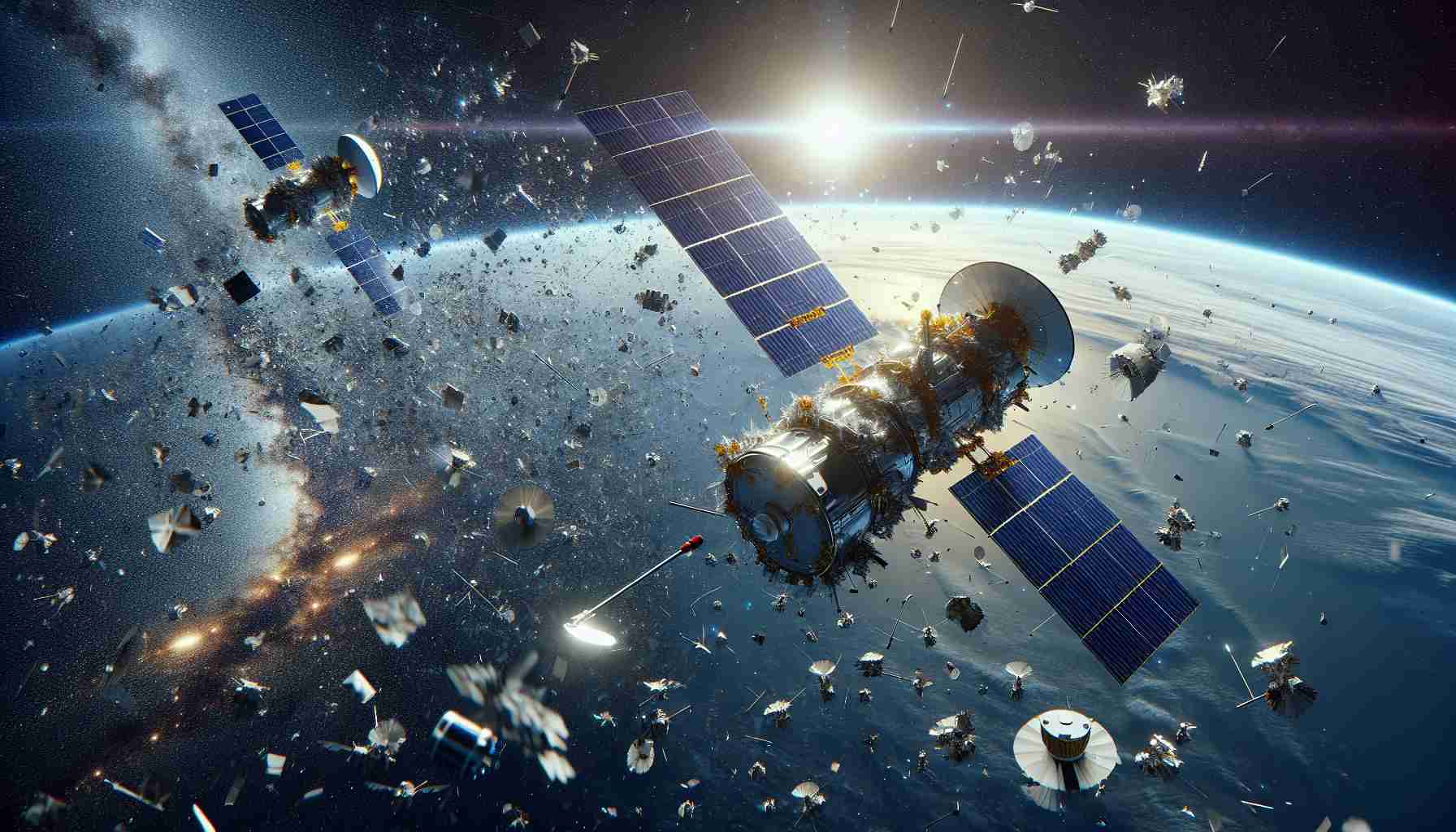Innovative Moves in Space Debris Removal
A Japanese mission is making headlines as it closes in on an abandoned rocket stage in Earth’s orbit. Led by the satellite technology company Astroscale, this ambitious initiative aims to tackle the growing problem of space debris. Currently, there are approximately 27,000 pieces of space junk larger than 10 centimeters orbiting the planet, and this mission is designed to help remediate that issue.
The project, known as Active Debris Removal by Astroscale-Japan (ADRAS-J), recently achieved a remarkable milestone by getting as close as 15 meters (almost 50 feet) to a discarded upper stage of Japan’s H2A rocket, which was initially launched in 2009. Astroscale celebrated this historic event on social media, highlighting their spacecraft’s closest encounter ever with a piece of space debris.
The craft previously orbited the derelict rocket to gather data, and this latest attempt involved a strategic approach from a distance of 50 meters. However, the mission was not without challenges. Although the spacecraft successfully navigated to a point near the debris, it had to abort its attempt due to an unexpected anomaly, activating its autonomous collision avoidance system.
Looking ahead, Astroscale plans a follow-up mission in 2028, known as ADRAS-J2, which will include a robotic arm designed to bring the spent rocket stage down to a lower orbit where it can safely disintegrate in the atmosphere. This endeavor represents a crucial step towards cleaning up low Earth orbit, ensuring safer conditions for future space explorations.
Revolutionizing Space Cleanup: Astroscale’s Vision for a Debris-Free Orbit
Innovative Moves in Space Debris Removal
The increasing clutter of space debris poses a significant threat to both operational satellites and upcoming space missions. As the international community recognizes the urgency of tackling this issue, innovative projects are emerging, spearheaded by companies like Astroscale.
Astroscale’s initiative, Active Debris Removal by Astroscale-Japan (ADRAS-J), has made headlines as it progresses toward removing defunct spacecraft from Earth’s orbit. Currently, an estimated 27,000 pieces of debris larger than 10 centimeters are circling the planet, creating hazardous conditions in low Earth orbit (LEO). In response to this growing crisis, Astroscale’s efforts are crucial.
Recent Mission Success
Astroscale’s recent milestone saw their spacecraft approach within 15 meters (almost 50 feet) of a derelict upper stage from Japan’s H2A rocket, which was launched back in 2009. This close encounter is a significant achievement in autonomous navigation and the collection of orbital data. Although the mission faced a setback when the spacecraft had to abort its close rendezvous due to an anomaly, the incident highlights the complexities involved in space debris management.
The Future: ADRAS-J2 and Beyond
Astroscale’s follow-up mission, ADRAS-J2, is slated for 2028 and aims to incorporate a robotic arm designed to capture and deorbit the inactive rocket stage safely. This approach marks a pivotal move in reducing space debris and ensuring the long-term sustainability of space activities. The goal is to lower the defunct stages to a point where they can burn up upon re-entry into Earth’s atmosphere.
How It Works: Active Debris Removal
1. Identification: Utilizing advanced tracking and observational technology, Astroscale identifies and locates space debris.
2. Navigation: Their spacecraft navigates close to the targeted debris, gathering essential data for future removal efforts.
3. Capture Mechanism: The upcoming ADRAS-J2 will deploy a robotic arm capable of capturing debris safely for controlled deorbiting.
4. Deorbiting: The captured debris is then moved to a lower orbit, where atmospheric friction causes it to disintegrate upon re-entry.
Pros and Cons of Active Debris Removal
Pros:
– Reduces collision risks for operational satellites.
– Helps maintain a sustainable space environment for future explorations.
– Advances technological capabilities in autonomous space operations.
Cons:
– High costs associated with development and mission execution.
– Technical challenges in capturing and deorbiting large objects.
– Potential for creating additional debris during capture attempts.
Pricing and Market Trends
The cost of debris removal missions can reach millions of dollars, necessitating funding from various sources, including government agencies, private investors, and international collaborations. The growing market for space traffic management services, which includes debris tracking and removal, is predicted to see substantial growth over the coming years as the number of active satellites increases.
Security Aspects and Innovations
As space becomes increasingly crowded, the need for effective debris mitigation strategies is paramount. Companies like Astroscale are at the forefront, implementing innovative technologies that enhance the safety and security of space assets. These innovations not only prevent costly collisions but also foster international cooperation in space sustainability.
Conclusion
Astroscale’s ADRAS-J mission marks a significant step in addressing the pressing issue of space debris. By advancing technology in debris removal and fostering international partnerships, the mission sets the stage for a cleaner and safer orbital environment. As we look towards a future filled with space exploration opportunities, initiatives like ADRAS-J are essential in maintaining the integrity of our outer space.
For more information about cutting-edge space technology and missions, visit Astroscale.



















